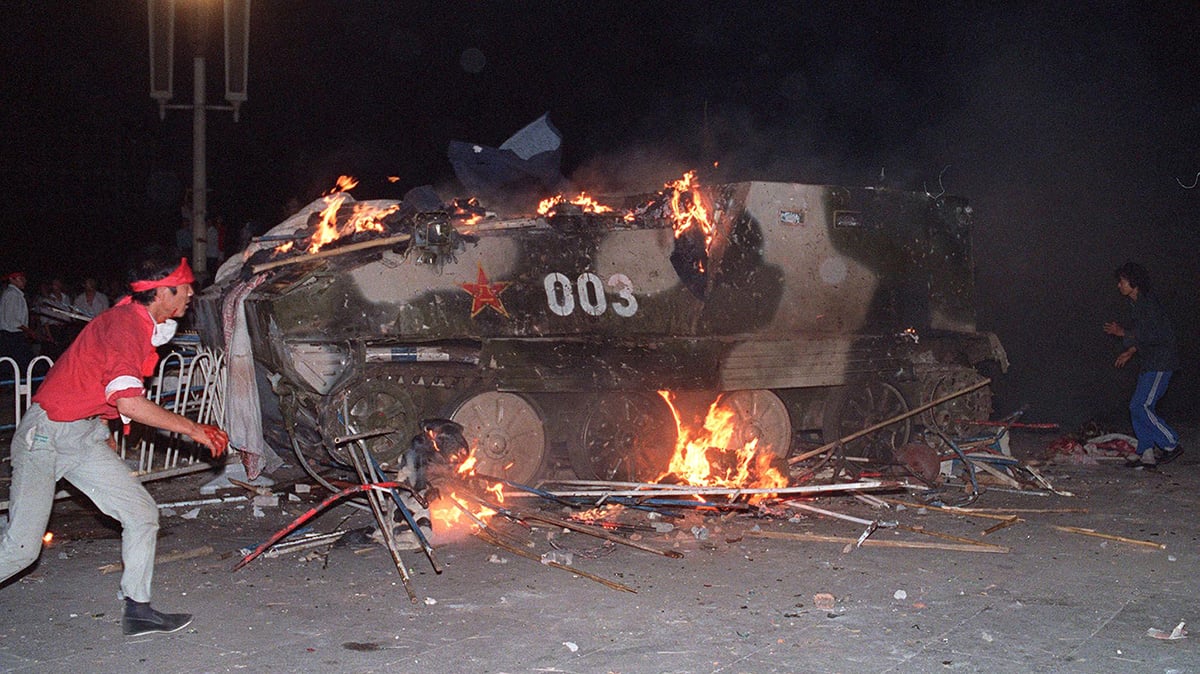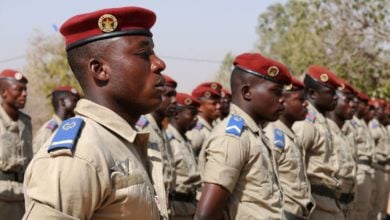Marking a momentous victory for the revolutionary struggle in Nepal, Prachanda, the long-time leader of the Communist Party of Nepal (Maoist), has been sworn in as prime minister.
|
A complex political struggle is unfolding between various political parties in Nepal. From a distance the struggle can seem so complicated that it is nearly incomprehensible. However, the myriad political and electoral maneuvering between the political parties are, at their root, a struggle between irreconcilably hostile class enemies for control over the Nepalese state.
On one side of this class struggle are the working classes of Nepal. The most numerous is the poor peasantry. The other working class is the wage earners who toil in capitalist-owned enterprises.
The Maoist Party, the CPN(M), is emerging as the dominant force in the government, but it has not as yet been able to smash or thoroughly purge the old official military that served the monarchy, the landowners and the capitalists.
A key component of the CPN(M) program has been land reform. The great majority of Nepali people live in rural areas—oppressed by deep poverty and a severe feudal social system. Sixty-five percent of the country’s 26 million people survive on subsistence farming. The top 5 percent of landholders own 27 percent of agricultural land while the poorest 44 percent all occupy only 14 percent of the land. Land reform is necessary for the Nepali masses to begin to overturn the feudal system that dominates the country, yet it is bound to meet resistance from the Nepali aristocracy.
The CPN(M) has won the allegiance of millions of poor people because of its decade-long armed struggle that brought down the monarchy. Other political parties are opposed to the monarchy, but loyal to capitalism. A strange alliance of outright capitalist parties and even some “left” organizations have united against the ascendancy of the CPN(M).
The ascension of Prachanda, the Maoist leader, to the office of the Prime Minister represents a major defeat for the eclectic coalition of bourgeois and middle-class parties who sought to defeat the Maoist party.
The vote was scheduled after the CPN(M), Nepali Congress party, Communist Party of Nepal (Unified Marxist-Leninist) and the Madhesi People’s Rights Forum missed an extended deadline to form a national consensus government on Aug. 8. The Nepali Congress had called for Prachanda’s resignation as the leader of the CPN(M)’s military wing, the People’s Liberation Army, and demanded that the NC be given the Ministry of Defense.
The CPN(M)’s electoral triumph is the latest development in a fast-paced, dynamic political transformation unfolding in Nepal. The almost 240-year reign of the Nepalese monarchy was ended in May with the establishment of a republic, a victory won by the militant struggle of the Nepalese masses against an incredibly corrupt and repressive feudal ruling class.
In the April election of the Constituent Assembly, the CPN(M) won 226 seats, the NC won 110, the Communist Party of Nepal (Unified Marxist-Leninist) won 103 and the Madhesi People’s Rights Forum won 50. In an election held in the assembly on July 22, the NC candidate Dr. Ram Baran Yadav won the largely ceremonial position of president.
Though the CPN(M) won more seats than any other party, it did not win a majority of the 601 seats. The lack of a majority prompted the CPN(M) to enter into talks with the other main parties to form a government. The NC, the CPN(UML) and the Madhesi People’s Rights Forum essentially collaborated to undermine the formation of a CPN(M)-led government.
Through skillful political maneuvering, however, the CPN(M) managed to shift the political alliances between the collapse of the talks and the elections. CPN(M) leaders worked out agreements with the Madhesi People’s Rights Forum and the CPN(UML) to include them in the government in exchange for support for Prachanda against the NC candidate. The electoral victory would not have been possible otherwise.
Which way forward?
While the overthrow of the monarchy is a high point in the Nepali people’s struggle for liberation, it does not represent a complete overthrow of the feudal system. It is a political victory in the continuing struggle of the Nepalese people.
The Seven Party Alliance that overthrew the monarchy and led to the establishment of the republic included the CPN(M), the NC—a coalition of capitalist parties—and the CPN(UML). This alliance dealt a final blow to the moribund regime, which had already been severely weakened by the war against the PLA.
With the monarchy abolished and a republic established, the political differences between the main contending forces have come to the forefront.
The CPN(M) is recognized by the masses as a significant force in the leadership of the struggle that overthrew the hated monarchy. The capitalist forces in the Nepali Congress understand this. Their representatives in the Constitutent Assembly were forced to negotiate with and, at times, succumb to the leadership from the CPN(M) because of the popular struggle. The CPN(UML) and the Madhesi People’s Rights Forum chose their political alignments based on advancing their stature in the government rather than pushing the revolutionary struggle forward.
These CPN(M) and the NC groupings, though, represent fundamentally different class interests. The Nepali capitalists, represented primarily by the NC, will fight to enrich itself in every way possible through the continued exploitation of the masses. The CPN(M) comes from and represents the interests of the country’s vast peasantry and its developing working class. Whereas the NC would be quite content with the establishment of a capitalist democracy, the CPN(M) seeks to advance Nepal toward socialism.
The Maoists originally put forward three demands before being able to form a government: that opposing forces refrain from organizing against the new government for two years, that the other three main parties dissolve their alliance, and that a common minimum program be formulated. It persistently sought to reach an agreement with the other leading parties up until the Aug. 8 deadline.
A high stakes game
The state apparatus—the military in particular—remains a core issue in the present political struggle. During talks, both the CPN(M) and the NC wished to secure the highly coveted Ministry of Defense for themselves. The integration of the Maoist PLA forces into the national military remains an issue of contention.
PLA fighters are currently residing in seven U.N.-run camps with their weapons under lock and key. The United Nations is leading the vetting process that has so far cleared almost 20,000 fighters to join the Nepali armed forces.
The CPN(M) has expressed approval for integration. However, the government’s military leadership—which historically has been allied with the most right-wing supporters of the monarchy—has steadfastly opposed the process of bringing the soldiers of the Maoist army into the national army.
For the Maoist forces fighting for socialism, the issue of the state is of critical importance. A revolutionary victory ultimately requires that the state apparatus of the former ruling classes be dismantled and replaced with a workers’ state—a goal that has not been attained.
The CPN(M) obtained a strong mandate from the Nepali people through the elections, but the official military’s top brass do not share its commitment to socialism. The largely royalist national army would likely favor the bourgeois forces over the CPN(M) in the event of an all-out confrontation over the country’s direction.
CPN(M) control over the Ministry of Defense would facilitate the integration of PLA forces and give it some power to curb the reactionary tendencies within the army. Whether PLA officials can retain commanding positions in an eventual integration is of vital significance to the class loyalties of the army. Regardless of the details of implementation, integration would not amount to a complete overthrow of the old state; however, it could significantly reduce the reliability of the military as a tool in the hands of counterrevolutionary forces.
The path ahead contains many obstacles. The CPN(M), even if their leader assumes the office of the prime minister, does not hold state power. The state, in its essence, is the organized military and police forces. The government officials are office holders, but real power resides in the force of organized violence and coercion.
Even if the Maoists have a dominant position in the government, it is not a guarantee that the organized military will not subvert them in the interests of the capitalist class. The political and military representatives of the capitalist and landowning classes have no desire to see the revolutionary movement go forward. The lack of resources poses an obstacle to implementing reforms that can tackle widespread poverty, yet improving the lives of the oppressed masses is a must to guarantee continued support for the CPN(M) leadership.
The CPN(M) must also navigate through a hostile international environment. Leaders from the United States, European Union and India have all formally congratulated Prachanda’s victory—gestures that should not be mistaken for support. The balance of political forces following the end of the civil war in Nepal has forced these governments to reluctantly recognize the legitimacy of the CPN(M) and the recent electoral victory of its leadership. None wish to see the revolutionary process advance in Nepal.
The election of Prachanda is an achievement that deserves the support of revolutionaries around the world. A struggle over Nepal’s new constitution is bound to pit conflicting class interests against each other in the months to come. International solidarity will play a key role in facilitating the victory of Nepal’s workers and peasants.






